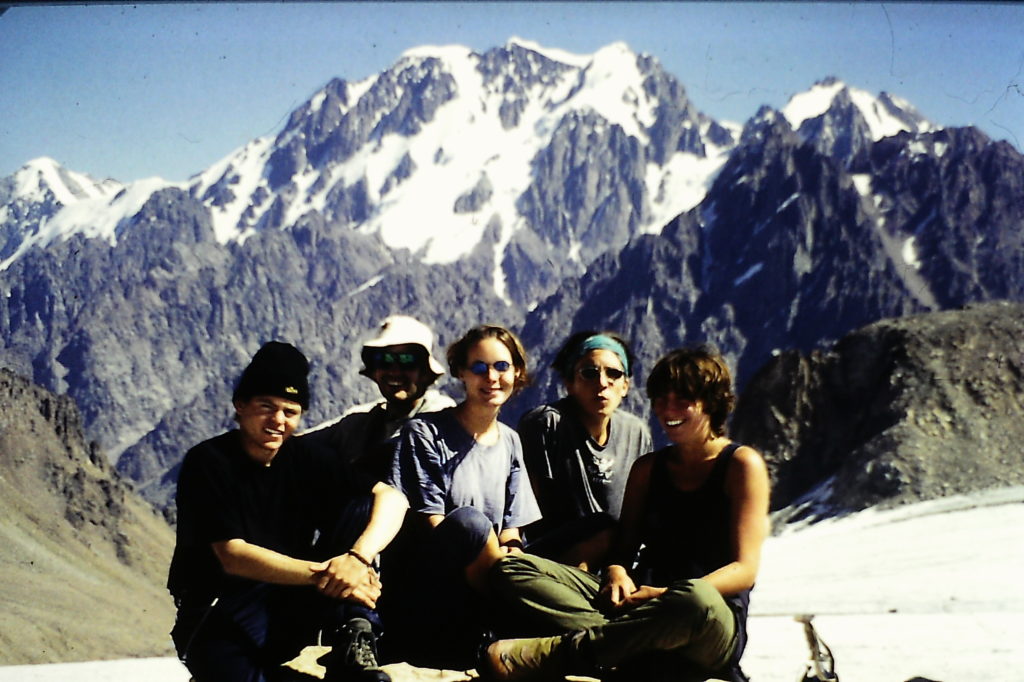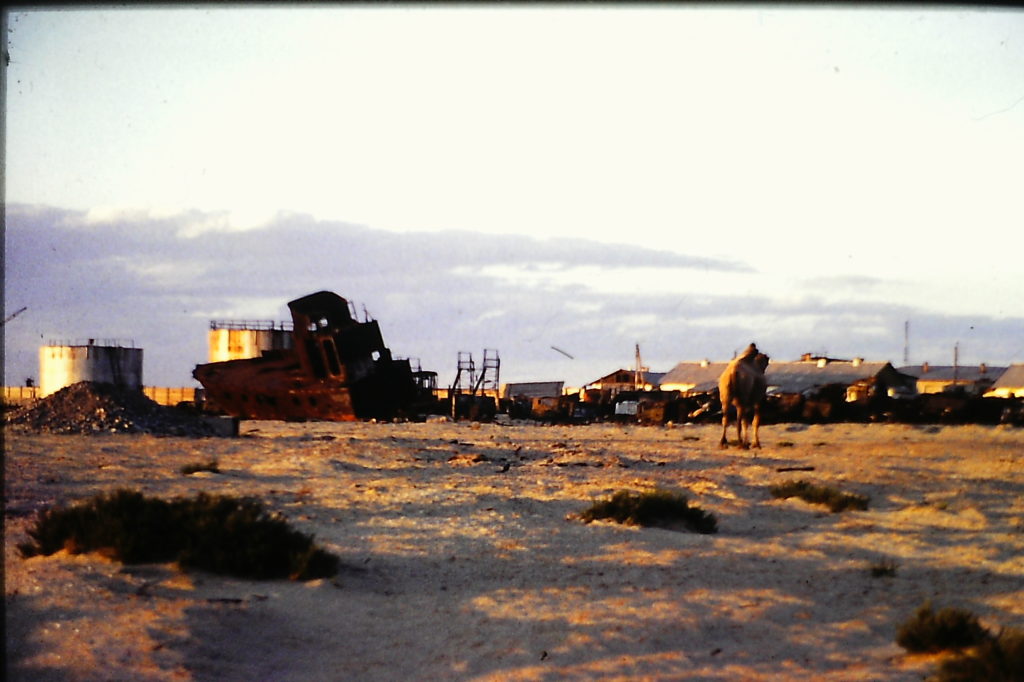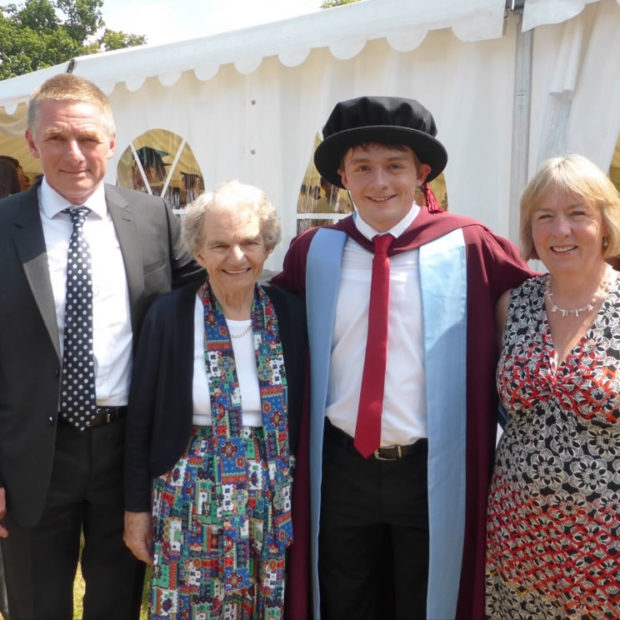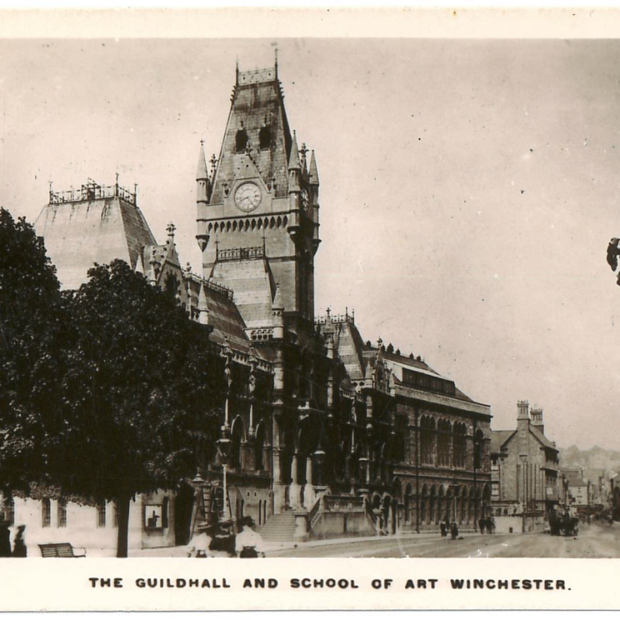Hartley News Online Your alumni and supporter magazine
In July 1996, five Southampton engineering students flew to Kazakhstan on a joint Kazakh-British expedition called Aral 96. Their motivation was the drying up of the Aral Sea, a massive environmental and social disaster that had unfolded in the secretive hinterland of the Soviet Union. Aral 96 involved massive physical and mental stress, testing all involved to their limits. Despite a few near misses, everyone got back safely. 25 years on, alumnus Nick Jeffries (BEng Environmental Engineering, 1997) reflects on their expedition in the unknown…
Joining Nick on the journey were Dan Burbidge (BEng Environmental Engineering, 1996), Seth Richardson (BEng Environmental Engineering, 1998), Susan Gourvenec (PhD Engineering, 1998), and Ursula Peutot (née Lewis) (MEng Environmental Engineering, 1997).
The birth of Aral 96
In 1996, when the world was still mostly analogue, a map of the world hung on the wall of my family kitchen. During meals, my eyes would rove around this map, often pausing on a large empty central section containing mysterious sounding cities such as Ashgabat, Bishkek, Dushanbe, and Samarkand. What did things look like at ground level? How did people live and eat within this vast expanse? In the pre-internet era, it was not easy to answer these kinds of questions. 25 years later, in 2021, for most people, this region is still a blank.
At that time, I was an undergraduate engineer just starting my second year. One afternoon in late autumn, I knocked on the door of my new tutor, Professor Trevor Tanton, to introduce myself. Being a little bit scatterbrained, he mistook me for a fresher, and began a long monologue about university life. After a minute, I interrupted him, and to deflect any embarrassment, questioned him about the possibility of work experience at the end of the academic year.
“How would you like to float down the Syr Darya river in Kazakhstan?”
And just like that Aral 96 was born.
Planning for the expedition
The first team member, Susan, was recruited during a geology field trip to Durdle Door. Shortly after, several undergraduates responded to the ‘Wanted: Adventurous Engineers’ posters pinned up all around the faculty building, and soon Dan and Ursula were on board – then finally Seth completed the British half of the team.
During the planning process, our main preoccupation was fundraising, but we were all very eager to learn more about the terrain and conditions in the expedition area so we could prepare ourselves physically and mentally. Getting hold of this information was difficult, but one day, we received a typewritten letter from a local biologist called Artiom Polkanov, who painted a picture of the landscape adjacent to the Syr Darya river, as well as some potential discomforts.
Finally the abstract was becoming real. A picture was emerging of an austere but beautiful landscape, extreme variations in temperature, scarce water, substandard food, and insects with an unquenchable appetite for human blood.
The aim of Aral 96 was to collect data to determine how the flow of the Syr Darya reduced along a 250km section. At the top of the section, the total river flow would be measured, and this same measurement would be repeated four or five more times downstream at intervals of about 50km. When we came across an offtake or a return drain, the flows of these channels would also be measured. By collecting this data, Aral 96 would provide the foundational data for an overall water management model of the Aral Sea basin, which could be used to make better decisions on remediation projects related to the crisis.

From left to right: Seth Richardson, Dan Burbidge, Ursula Lewis, Nick Jeffries, Susan Gourvenec
Arriving in Kazakhstan
Touching down into the bright Kazakh sun in July 1996, we had to deal with some final logistical issues, including the procurement of a few tonnes of food and the transporting of 10 people over 1,000km into the expedition area.
The Almaty-to-Shymkent train takes you on a journey of about 26 hours skirting along the foothills of the Tien San, which in theory seemed a practical, if not enjoyable, solution to our transport challenge. The reality turned out to be a sauna on wheels. As the train pulled away from the station, euphoria turned into sweat. The locked windows of our private compartment made it feel as if we were imprisoned in an oven, and despite the massive discomfort, our Kazakh colleagues insisted that we stay in our compartment as it was ‘very dangerous’ to wander around.
When night fell, the temperature cooled down a little, and we were able to make the occasional foray from our carriage, allowing us a closer look at our fellow travellers who all seemed a little stony-faced. The only time that I did manage to raise a smile was when I fell into a storage compartment sunk into the train floor. Whoever had opened it had omitted to close it, and my tumble prompted a burst of laughter from the gathered onlookers, proving that schadenfreude transcends all political ideologies.
First sight of the Syr Darya
A local security guard had suggested for our first camp an abandoned Czech-built pumping station located about 100m from the edge of the river near the village of Tomenaryk.
From the 1960s, hundreds of similar pump stations and canals had been established to extract water from the Syr Darya river to irrigate desert fields full of cotton. The irrigated land would soon become too salinated to cultivate crops, and the diversion of the river flow caused the Aral Sea to shrink dramatically – with catastrophic consequences to millions of livelihoods, public health, and an entire ecosystem. The aim of Aral 96 was to collect data about these water losses to help develop a water management model that would assist in remediating some of the damage.
When we reached the first camp, a full-blown dust storm was roaring, making it difficult to hear, see, or do anything. When the storm passed, at last we were able to appreciate in its full glory: the mighty Syr Darya, born in the meltwater of the Tien San, the fabled ‘Mountains of Heaven’, and then flowing 2,000km down steep valleys, across grassland and desert, before finishing its journey in what was once the vast Aral Sea.
We were all taken aback by the river’s size and power. The Syr Darya looked less like a river, more like a choppy and uninviting sea. The task that lay ahead of us, that had been conceptual up to this point, now felt very real and very intimidating.

An offtake canal from the Syr Darya river
A dangerous mission
The plan required long river journeys that separated a small group from the umbilical cord of the expedition for at least a day. The boat had no cabin, its engine was notoriously fickle, and there was no method of communicating with the mothership. Participation in these trips meant embracing ‘unknown unknowns’ and the possibility of a night or two in the tugay (a narrow strip of forest that runs parallel with a river). Aside from the more obvious hazards of feral dogs, snakes, scorpions, and blood-sucking insects, we were also advised to scan regularly with a Geiger counter to check for excessive radioactivity. During the Soviet times, Kazakhstan had played host to many military projects. Since independence, various previously unmapped caches of uranium and plutonium had popped up all over the country.
The closest we came to death or serious injury happened at the end of the very last boat mission. For once, the engine was running well. Adair, a local team member, was at the helm, and the rest of us were sitting facing backwards, enjoying the sun after a productive and relatively trouble-free day. All of a sudden, Adair shouted out in alarm, and simultaneously leapt up and jumped on top of us. As we were flattened onto the floor of the boat, I felt a swish over my left shoulder as we passed under a thin taut steel cable that had been stretched across the river at approximately neck height. Whether this cable would have bisected, decapitated, or merely scalped us, I cannot tell – and I am forever grateful to Adair Kystaubaev, whose cat-like reflexes prevented us from finding out.
Concluding the expedition
When we finished on the river, we drove to the seaside town of Aralsk, where we stayed in a shabby hotel that overlooked a desolate, dried-out harbour dotted with rusting ships. We wanted to drive to the new shoreline of the Aral Sea to symbolically wet our toes, but the distances were too great and the terrain too difficult. So instead we turned around, and began our long journey back to Almaty.
The measurements that we collected during Aral 96 showed a significant drop in flow over the 250km section, as well as the location of these losses. On our return to Almaty, we presented this data to the Kazakh State Academy in the hope that it could assist them to leverage funding with the World Bank and other institutions – allowing a full survey of the Syr Darya that could populate a basin-wide water management model. It is not known how successful this was, but it appears that most efforts in the last 25 years have been directed towards resurrecting a small part of the North Aral Sea, rather than the almost impossible task of a basin-wide programme to restore the sea as a whole. The return of fish to the North Sea has shown some of the benefits of this approach, and demonstrates that, given the chance, nature can bounce back from the worst of situations.
Before leaving Kazakhstan, we took a well-earned break in the Tien San mountains where the Syr Darya starts its journey, hiking for 10 days along glaciers and over high peaks. This time allowed us to decompress from the stress of the desert, and appreciate nature in her untouched beauty.

Camels and rusting boats in the dried-out remains of the Aral Sea
Quarter of a century later
As I write this almost 25 years after we set off to Kazakhstan, there are now two billion more people on the planet. I am still working on environmental issues, now with the Ellen MacArthur Foundation – an organisation with a mission to shift the economy onto a less wasteful and more regenerative trajectory through the application of circular economy principles. Our programmes entail, among other things, a rethink of the fashion industry – which despite the tragedy and lessons that could be learnt from the Aral Sea, still produces much of its cotton in an extractive and polluting way.
For those members of the team that I have stayed in contact with, Aral 96 was a life-shaping experience that has led to successful careers in academia and business. The big lesson that I took away was that the big leaps in progress often require taking a step out of your comfort zone and into the unknown.
For a more detailed version of the expedition, visit Nick’s blog. You can also contact him on LinkedIn.
Did you take part in an expedition at Southampton and want to share your story? Are you still in touch with your fellow alumni? If so, we’d love to hear from you – email us at alumni@southampton.ac.uk



